Financially beleaguered German mining company HeidelbergCement, owner of Silicon Valley’s devastating Permanente Quarry, wants to expand and extend the mine’s reclamation to 2060, after the company told county residents in 2012 that it would close the mine and reclaim the land by 2032.
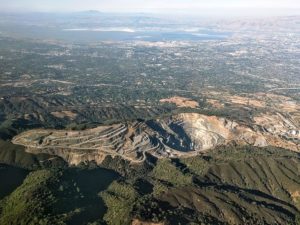
By Sharon Simonson
SILICON VALLEY—Given that Santa Clara County Supervisors devoted fewer than ten minutes to the item, and considering that four of the five supervisors asked no questions, and understanding that the fifth’s questions were superficial and unrevealing—nothing about the unanimous vote during their virtual meeting on the afternoon of May 12 telegraphed significance. But for residents of Silicon Valley and the global German mining company HeidelbergCement, which owns the Permanente Quarry above the Silicon Valley in the Santa Cruz Mountains, the moment was anything but perfunctory.
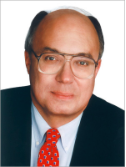
By accepting yet another of Heidelberg’s promises not to pollute the valley, the supervisors were doing much more than resolving two seemingly minor environmental violations. They also were clearing a crucial regulatory hurdle for Heidelberg and its plans to again expand its Silicon Valley quarry and to extend its life well beyond the time when most of us will be dead.
The success of its huge Silicon Valley expansion plans matters more than ever to Heidelberg. Global financial tides have turned against the cement maker, which entered the corona era with too much debt. The company’s coveted investment-grade credit ratings are teetering. Moody’s Investor’s Service, Fitch Ratings, and Standard & Poor’s all rank the company’s short- and long-term debt as one step above junk, and both Moody’s and Fitch are warning that Heidelberg’s position even there is precarious. In an effort to hoard cash, corporate managers have slashed stockholder dividends, cut board and executive pay, furloughed employees including in the United States, and pushed off planned 2020 capital investments. The stock price has fallen precipitously since 2018, and institutional investors are fleeing.
Amidst tough questions from analysts on its most recent quarterly conference call about demand for cement in a socially distanced, pandemic-inflicted world—where new office buildings and giant concrete roadways seem suddenly quaint and anachronistic—company managers deflected answers to September and a previously scheduled business strategy session.
For now, Heidelberg is betting on government stimulus spending in Europe and the United States for market opportunity, its CEO said. They’re also pushing prices—even canceling contracts where they believe the profit margins inadequate—and have maintained revenue by increasing prices as they have lost sales volume. It is a strategy they intend to pursue, and one with special implications for Santa Clara County, where the company claims the mine supplies 80 percent of the cement market, and for the Bay Area, where it claims to supply half.
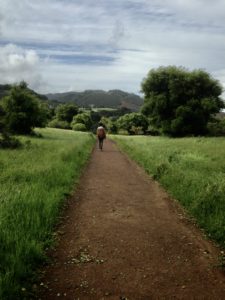
Against the lush dark-green of the California oak trees that crowd the foothills of the Santa Cruz Mountains above the Silicon Valley, the chalky gray Permanente Quarry exudes death. The mine is perhaps the most visible regional symbol of environmental degradation. The best view that I’ve found—or should I say the most sickening, as it reveals the whole scar—rises as you travel north on the 280 freeway a quarter mile or so before you reach the huge new Apple ring (made of concrete).
In 2012, against community opposition, Santa Clara County allowed Heidelberg to nearly quadruple the size of the quarry operations. In the ensuing eight years, I have watched with rising disgust and horror as the quarry has metastasized down the flank of my beloved mountains. In the opening paragraphs of its contract with Santa Clara County, Heidelberg said in 2012 that it intended to close the mine and to restore its huge ugly pit and mountains of mine waste to “natural hillside” by 2032—a mere twelve years from now. Its agreement laid out in detail three phases, the last of which speaks of the ugly mine and buildings disappearing, and final restoration. It all reads like a fairy tale now. Under Heidelberg’s proposed expansion, it would open an entirely new pit and would extend the reclamation of the mine out forty years, to 2060.
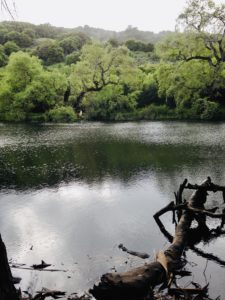
That year, I will turn 98 years old, and my husband will be 100. My 24-year-old son will be entering late middle age. I have plans to be here, but I’m sorry, I can’t make any promises.
Despite Heidelberg’s ample corporate resources—it is one of the largest heavy building-materials producers in the world with approximately $20 billion in annual global revenue—the mine has a depressing and enraging history of environmental abuse of Silicon Valley—and the continued support of the business community. Santa Clara County Supervisors and their staffs have been largely powerless to stop it. In 2006, the year before Heidelberg acquired the mine, the California State Mining and Geology Board nearly took over all mine regulation in Santa Clara County. Heidelberg’s lawyers and internal environmental manager continue to display deep disdain for county staff. They repeatedly present the company as a long-suffering victim of county bureaucratic incompetence. Nothing acknowledges that Heidelberg and Permanente Quarry are by nearly any measure horrible corporate citizens, or that their conflicts with the local population stem from their huge 2012 expansion, their intrusive operations, their terrible environmental record, their aggressive litigiousness, and their representatives’s haughty insensitivity in writing and in person.
The company’s disrespect for Silicon Valley in the past seemed to emanate directly from its Heidelberg, Germany, headquarters, based on public statements by the former chief executive. But it remains embodied in the company’s persistent and continuing violations of California and Santa Clara County mining laws including its 2018 wholesale destruction of oak forest to impermissibly widen a road and the 2019 Yeager Yard landslide that slid into Permanente Creek from the 48-million-ton mountain of mining waste that has accumulated and that Heidelberg calls the West Materials Storage Area.
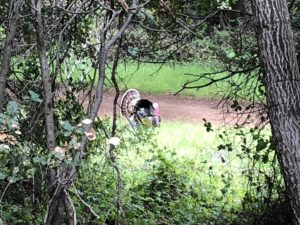
Named for its persistence during California’s dry season, Permanente Creek below the mine travels through the 4,000-acre Rancho San Antonio Open Space Preserve, nourishing California oak forests and bay laurel trees. The creek goes from there through the heart of Silicon Valley, crossing dozens of neighborhoods with thousands of houses where tens of thousands of people live and children go to school, then into the bay.
Before their May 12 vote, no supervisor indicated that he or she had read a 56-page report included in their agenda packet in preparation for the quarry matter. Rendered for the county by California certified engineering geologist-hydrologist Kit Custis based on his examinations of the quarry in December and January, the report makes clear that the quarry operator may have corrected the incursions of mine waste into the creek that caused the county and state water quality authorities to issue citations last year. But remaining is a much larger threat of a much bigger landslide. Such a landslide could block Permanente Creek and send debris and water wholesale down below.

The quarry’s internal environmental staff denied initially, in early 2019, that the company had a landslide problem at the West Materials Storage Area, citing its “best management practices.” The state water board had sent emails to quarry management at the beginning of 2019 warning of trouble based on aerial photos of the mine’s perimeter above the creek. Quarry staff continued to deny mine waste has flowed into Permanente Creek until an engineer and a geologist from the San Francisco Water Quality Control Board inspected on May 21, 2019. They documented compelling evidence in photographs and words that mine waste had reached the creek and that the West Materials Storage Area is sliding downhill. Photos show multiple huge fissures in the mining-waste hillsides measuring nine inches wide and wider and huge chunks of falling land. Captions say the fissures reach 20 feet or deeper.
In his report, based on observations at the quarry more than six months later, Custis found similar conditions, including multiple examples of the breakdown of “best management practices” by the mine operator. Custis concludes that the water table within the waste mountain appears to have risen, adding weight and causing the pile to start moving. He couldn’t be sure of current groundwater levels in the waste mountain, as the data that the mining company had supplied regulators in recent reports wasn’t up-to-date or apparently entirely accurate, he says. (This lack of data comes up as a problem elsewhere for him, too.) Seasonal rainwater likely infiltrated the waste mountain through “tension cracks” that the quarry operator allowed to open, he writes. “The Yeager Yard Landslide mass is moving towards Permanente Creek and its mass is sufficiently large to block the creek,” he says. “Should this happen during winter months, the runoff from the upper watershed would likely pond, creating a new debris flow hazard to structures and residences downstream. Real-time tracking of the rate and direction of movement of the landslide is critical, particularly if the rate of movement of the landslide increases.”

He recommends “that a protocol be established for immediately notifying the County should the rate of movement of the Yeager Yard Landslide, or any other (quarry) waste pile, indicate that waste rock could slide into and block Permanente Creek.”
“I also recommend that the mine operator take frequent measurements of groundwater levels in the Yeager Yard Landslide during winter months to track the rise and fall of groundwater levels. If the elevation of groundwater increases above historical levels, the mine operator should notify the County immediately…,” he writes.
Custis also finds that two key geotechnical reports by consultants for the mining company, done recently to analyze the stability of the West Materials Storage Area, do not agree on the “subsurface geology” of the natural rock formations supporting it. He notes gaps in the public disclosure and availability of technical data that underlie both analyses, which were submitted to public agencies as part of the company’s plans for dealing with the sliding waste pile. Engineering firm Stantec Inc. submitted its report to the county late last year. Its report did not include data from the boring logs taken from 25 boreholes drilled through the Yeager Yard landslide area, Custis says. He also underlines the inadequate citation of technical information in reports by construction design consultant Golder Associates in which the firm did not provide reference-able sources.
“The lack of documentation of the geologic conditions encountered in the boreholes, lack of information where soil/bedrock samples were obtained, and lack of documentation of laboratory testing results all inhibit evaluation of the slope stability results and the proposed interim and final grading plans for the Yeager Yard Landslide, as well as other areas of the mine site,” Custis writes.
“While there is a large record of information on the mine site’s operations and geotechnical conditions available to the County for use in reviewing the proposed revision to the Reclamation Plan, there is still a large body of site-specific data and technical information that is needed to![]() allow for proper regulatory review,” the geologist-hydrologist concludes.
allow for proper regulatory review,” the geologist-hydrologist concludes.
Hello Sharon, I have been working hard on and there is a great deal going on right now with Lehigh and the Stevens Creek Quarry both are trying to push their Applications through and I am trying to get answers from Santa Clara County and Joe Simitian’s office. I am waiting to get information about Lehigh and the latest application they submitted and it sure seems that the SCC Planning Department and Staff are unorganized and are keeping information from the public this is unacceptable.
I like your article very much and posted it on my Facebook to be available to the public I am not sure how far that goes out but I hope people can read my comments. I am not sure how your newspaper works but I hope you are getting responses and people are getting involved.